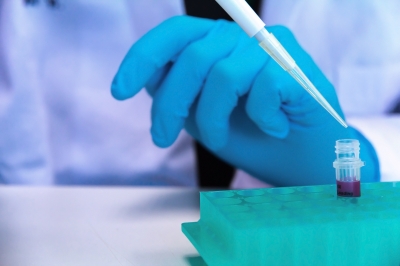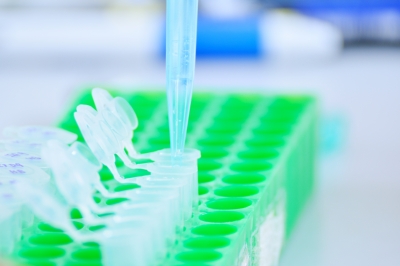Your shopping cart is currently empty.

Best Laboratory Practices - Pipette #1 - Selecting the best pipette for desired volume
Laboratory Best Practices - Pipette #1
Select the appropriate pipette for the volume you are dispensing
What
Pipette selection is an important part of pipetting. If you want to pipette 100 uL you could use pipettes with a maximum volume of 1000ul, 200ul or 100ul. Which should you choose? The one you have in your hand? Does it matter? The answer is yes it does matter. What you should do is always choose the smallest pipette to deliver the volume you need. If you want to dispense 100 uL, then use a 100 uL pipette, not the 200 uL or 1000 uL pipette.

Why
Please refer to the Anatomy of a Pipette section for reference and to see the parts described below.
Why should you choose the smallest pipette? The adjustment screw and the micrometer in a pipette are designed to have some backlash and tolerances in the gears and screws. This backlash and design tolerance aid in the manufacturing, environmental and thermal compatibility, as well the smooth operation of the pipette. It is important to know that all pipettes must have this backlash and tolerances designed into them for proper operation, even the higher cost ones.This backlash and tolerances affect the pipette accuracy. The adjustment screw in most pipettes adjusts how far the plunger goes down when you adjust the pipette volume. If the adjustment screw has an absolute systematic error of 0.2mm and a travel of 2 cm this is a 0.1% relative systematic error in the adjustment screw. This absolute error in the distance the lead screw travels translates into an absolute error in volume at the piston end. The magnitude of this absolute error is related to the volume of the displacement piston. Larger pipettes have larger displacement pistons, thus larger absolute errors at a given volume.This absolute plunger error is why you need to select the smallest pipette for the volume you need. Remember, the larger the plunger, the larger the absolute volume error. For example, assume a screw adjustment in a pipette has an absolute error of 0.2 mm, which translates into an absolute error of 1uL in a 1000uL pipette. If you set it to 1000uL the pipette will dispense 999uL, which is a 1uL error over 1000uL or a 0.1% error. If you dial it down to 100uL and it still has that 1uL fixed error then instead of dispensing 100uL it is dispensing 99uL or a 1% error. That same 0.2 mm absolute adjustment screw error in a 100uL pipette might translate into 0.1uL, which at 100uL would be only 0.1% error instead of the theoretical 1% error with the 1000 uL pipette. Please keep in mind that I am only talking about one specific source of error in a pipette as it relates to pipette selection. There are other sources of errors that we will also discuss in other best practice tip newsletters.

When
The fact is not every measurement is critical, sometimes just knowing you added approximately 0.5 ml is sufficient, and you do not need to know, nor take the time to ensure that you added exactly 0.498 ml. It is up to you to determine when a measurement is critical. If you are adding a non-critical bulk reagent or a approximate diluent to a reaction then accuracy is less important. If you are adding a limiting reagent to that same reaction, a standard or you need to dilute the sample to an exact concentration then it is important that you have the best accuracy and precision possible. Another important point is knowing the degree of accuracy of the equipment you are using throughout the process. Remember, you can only report results to the accuracy of your least accurate measurement. Selecting the appropriate pipette is easy if you have the correct pipettes available; if you only have the standard pipette starter kit with a 10 uL, 100 uL and 1000 uL pipette then it is not possible. If your measurements are critical then make sure you have the best sized pipette for the job.

